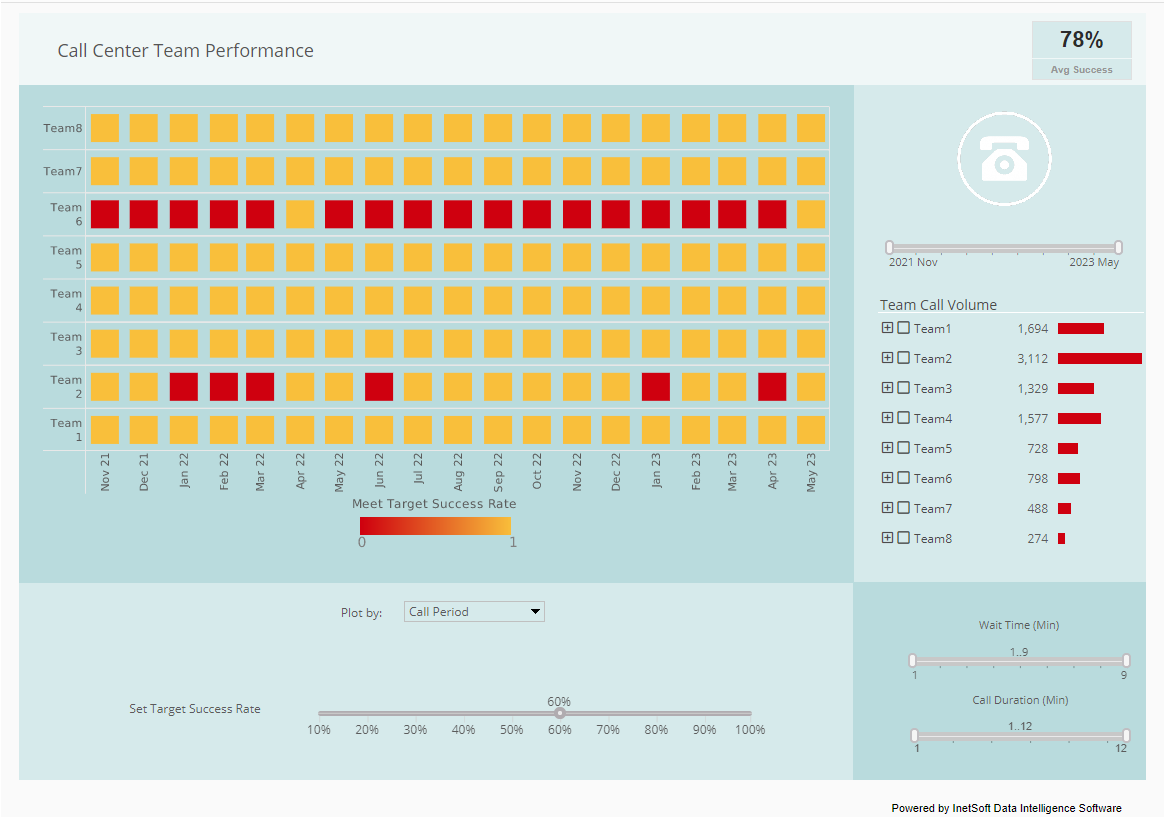Business Intelligence Server Pricing
Are you looking for a cost-effective way to implement a business intelligence solution at your organization? InetSoft Technology has a pricing structure that fits the need of all organizational models, from small businesses to established enterprises. InetSoft offers a small-footprint, full-featured BI platform that can be deployed on commodity servers or cloud infrastucture with a minimal instance.
InetSoft's app has built-in elastic computing capability so it scales up when demand for dashboards and analytics increases and scales down during idle time. Customers can eliminate wasteful spending on per user fees or idle capacity. Get started for free with the Cloud App. Enterprise and open source versions are available.

Explain How InetSoft's Small Footprint BI App with Built-in Elastic Computing Is More Cost Effective Than Traditional BI Alternatives
InetSoft's small footprint BI app with built-in elastic computing offers several cost advantages over traditional BI alternatives. Its design focuses on efficiency, scalability, and reduced infrastructure costs, making it a more cost-effective solution. Here's how:
1. Lower Infrastructure Costs
Traditional BI solutions often require expensive on-premise servers, extensive data storage, and dedicated IT teams to maintain hardware and software. InetSoft's small footprint means it:
-
Requires less computing power to run efficiently.
-
Can operate on commodity hardware rather than requiring expensive enterprise-grade servers.
-
Uses in-memory processing to optimize performance without needing additional hardware.
This significantly cuts down capital expenditure (CAPEX) and ongoing operational costs (OPEX).
2. Built-in Elastic Computing: Pay for What You Use
Most traditional BI tools lack elasticity, requiring users to overprovision computing resources to handle peak workloads. InetSoft's elastic computing automatically scales resources based on demand:
-
During low usage periods, computing resources scale down, reducing cloud and infrastructure costs.
-
During peak periods, extra resources are provisioned only as needed, preventing unnecessary spending.
This contrasts with traditional BI software, where companies must pay for peak capacity year-round, leading to waste.
3. Faster Deployment, Lower IT and Maintenance Costs
Traditional BI solutions often involve:
-
Long, complex implementation cycles (weeks or months).
-
Heavy customization and development work.
-
Dedicated IT support for maintenance, upgrades, and troubleshooting.
InetSoft's small footprint and self-service capabilities allow businesses to:
-
Deploy much faster, reducing setup costs.
-
Minimize reliance on IT teams, allowing business users to handle data integration, transformation, and visualization without requiring deep technical expertise.
-
Avoid costly ongoing maintenance, as the system updates automatically.
More Articles About BI Transformation Features
- Dashboard Data Transformation Tool
Summary: Describes how InetSoft enables real‑time data transformation directly within dashboard pipelines connected to live sources. Highlights drag‑and‑drop and SQL-enabled editing for data prep. Shows how transformation logic powers visual dashboards without separate ETL tools. - Data Transformation Tasks With Mashup
Summary: Explains the wide range of transformation operations supported by the Data Mashup Engine—cleaning, aggregating, filtering, joining, enriching, and more. Emphasizes self-service transformation without traditional ETL or data warehouses. Demonstrates how users can reshape data visually for dashboards. - Transform Combine And Script Data
Summary: Introduces StyleBI’s programmable data pipeline for transforming and combining data from diverse sources with inline SQL or JavaScript. Includes data quality testing and visual review of each pipeline step. Shows how transformation logic can be monitored and optimized graphically. - Intuitive Data Modeling And Transformation
Summary: Details StyleBI’s built-in data modeling environment for defining calculated fields, metrics, and business logic. Allows analysts to visually transform data and build reusable semantic models. Enables cohesive integration of transformation and visualization in one platform. - Data Access And Transformation Engine
Summary: Describes InetSoft’s mashup engine as a solution to data access and transformation challenges other BI tools struggle with. Emphasizes how it enables data from disparate sources to be reshaped and unified efficiently. Focuses on performance and agility in transforming analytics-ready datasets. - Transformation Involves Cleaning Aggregating
Summary: Offers a broader explanation of data pipeline steps, including transformation as critical stages in ETL/ELT workflows. Defines operations like cleaning, filtering, standardizing, enriching and aggregating raw data. Places InetSoft in context as a transformation-capable BI component. - Data Transformation For Dashboards
Summary: Highlights InetSoft’s ability to transform data visually within dashboards to prepare it for analytics without external tools. Emphasizes real-time transformation during visualization, enabling dynamic filtering and enrichment. Describes streamlined prototyping of dashboards with transformation built in. - Search Result: Transformation
Summary: Browse transformation-related content on InetSoft, including case studies and feature pages. Shows expert guidance on transformation best practices integrated into StyleBI. Enables discovery of solution-specific examples where transformation drives analytics. - Top Analytics Software Features
Summary: Lists transformation-related capabilities—data mashup, pipeline modeling, and caching—as key features among the top 14 analytics software characteristics. Emphasizes governability and manageability of transformation within the BI suite. Positions transformation as strategic for scalability and performance. - Tool For What If Scenarios Transformation
Summary: Mentions transformation capabilities within StyleBI as the foundation for “what‑if” scenario analysis and custom modeling. Shows how data worksheets allow dynamic transformation for forecasting and planning. Highlights the flexibility transformation brings to analytical experimentation.
